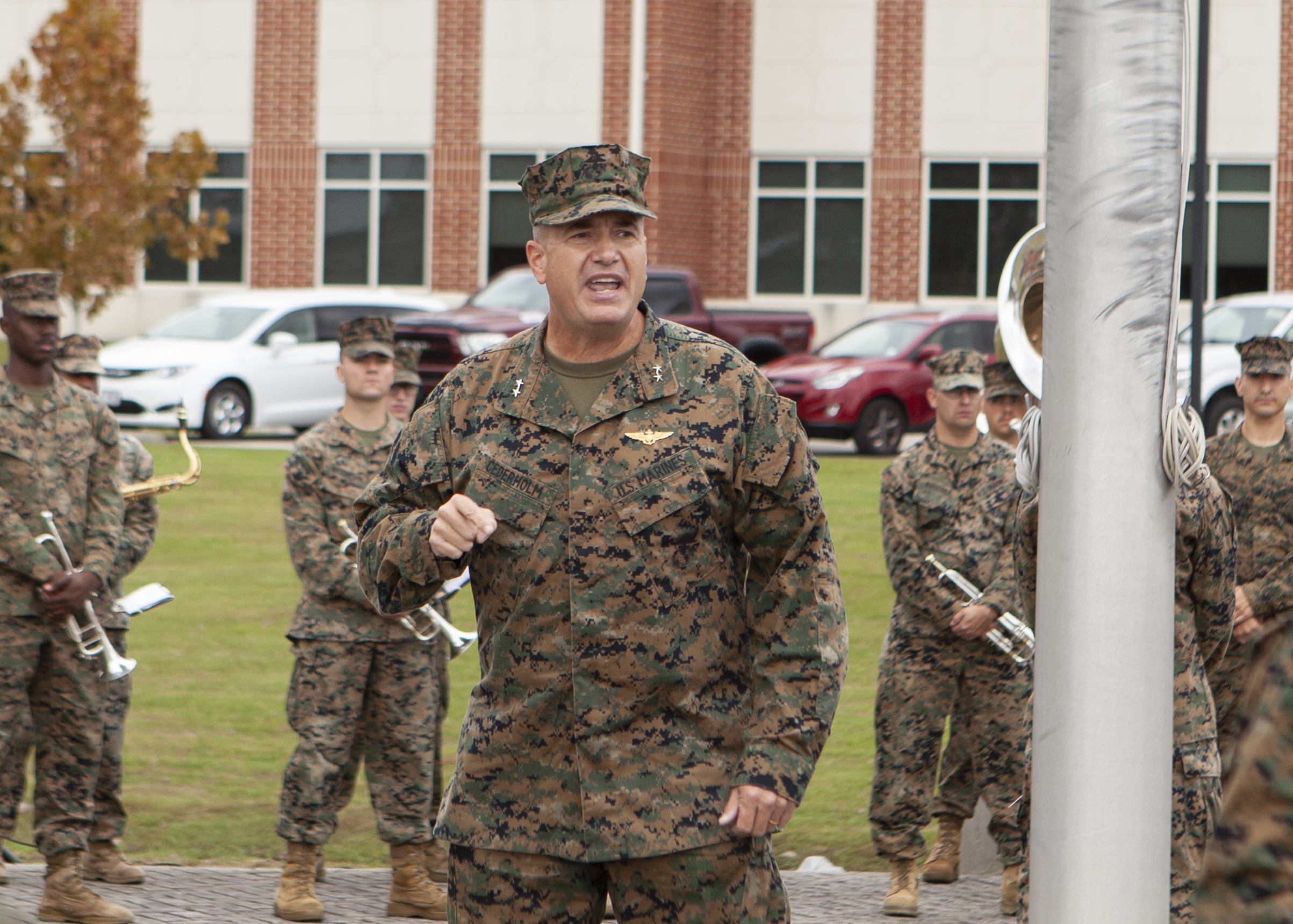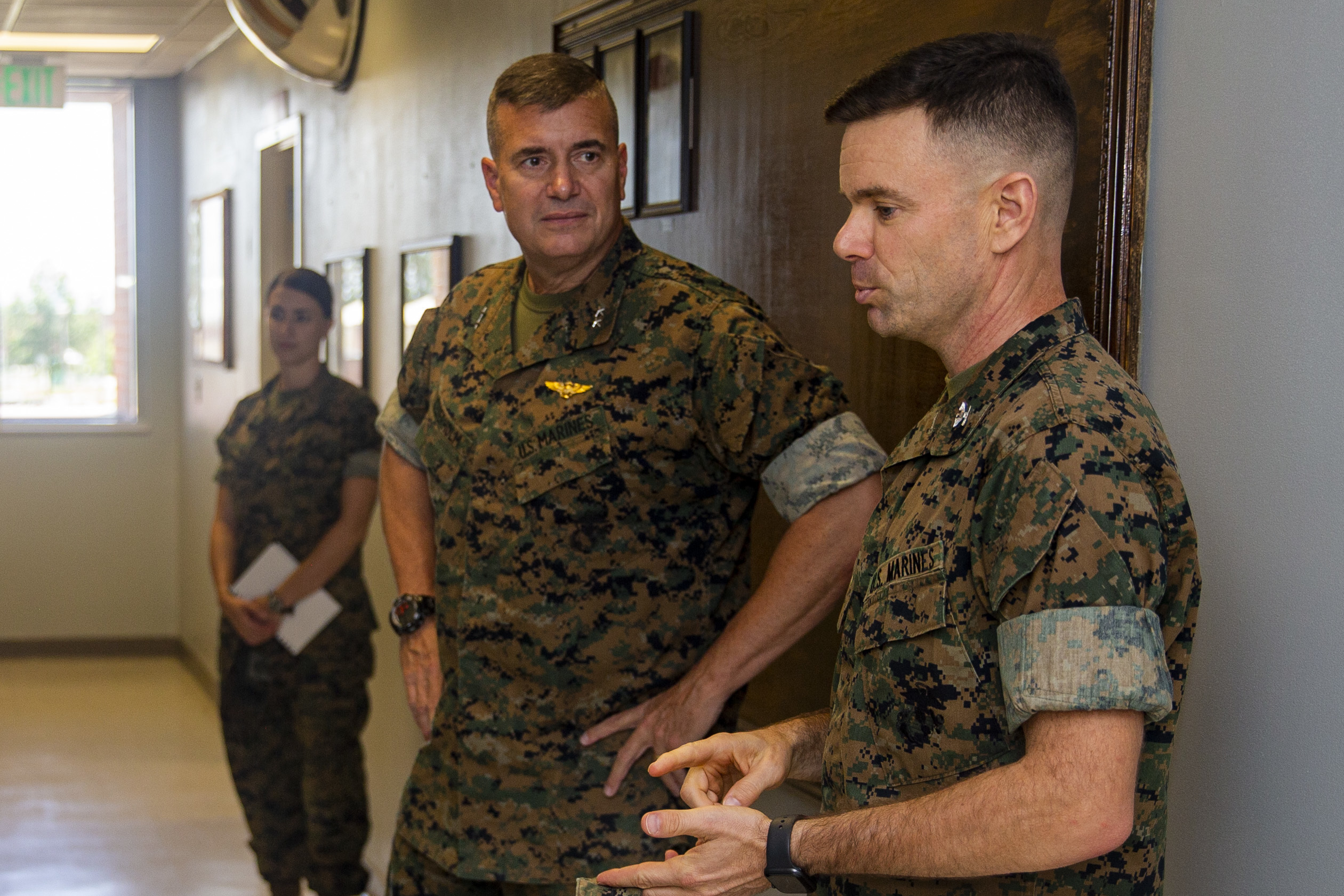By Robbin Laird
The Marines are undergoing a change with a sense of urgency associated with the strategic shift from the Middle East land wars to being effective in strategic competition. The Marine Corps exists to provide a globally deployable Naval Expeditionary Force in readiness, this means preparing for initial engagements in contested areas of operation and working within the Joint Force and our alliances to support the high-end fight if called upon to do so.
This is a strategic shift, but in many ways, it is a strategic shock moving away from the combat conditions and training associated with the Middle East to a wider variety of mission engagements in the Pacific and North Atlantic areas of operation. One noticeable constant is II MEF never stopped training to fight in any clime and place, to include spending more time training in the Nordic region with the Nordic allies.
But the blunt fact is that this generation of Marines have been engaged in the Middle East in counter-terror and related operations, not focused largely on operations in the littoral against strategic competitors. And to be clear, this requires crisis management skill sets specific to a wide diversity of situations which are likely to occur dealing with competitors in any region.
There have been new phrases coined suggesting how the Russians or Chinese operate in the new strategic environment such as hybrid war and operations in the gray zone. Clearly, the reset of the USMC involves being able to dominate in those situations as well as enabling the Joint Force and our allies to ramp up escalation capabilities as required.
During my July 2021 visit to 2nd MAW, I discussed this shift and its challenges with Marines, and with the CG of 2nd MAW, Maj. Gen. Cederholm. When I met with him last December, he highlighted the importance of increasing readiness for the force, and we started the July meeting by focusing on the Wing’s success in readiness over the past few years.
According to Cederholm, “We are in the process of approaching readiness levels that have not been seen in decades. On some days, our readiness rate has approached 73% of all our assets being flown. Marines at all levels have contributed to this success, one which is critical to enable us to meet our mission of being able to fight today.”
He then indicated that this was one of four key priorities being pursued by the Wing going forward. “Our first priority is to continue increasing our readiness rates by adding more combat depth through our formations. The second is to drive more lethality into our training and readiness (T&R) manuals. The third one is a combination of force preservation and force development, ensuring that we are training Marines, protecting Marines, and understanding risk, both organizational and institutional risk. The fourth is alignment to the future, or alignment to the 2030 force design effort.”
2nd MAW is clearly focused on the training piece as a key part of the way ahead. Major General Cederholm highlighted the need to train to fight today but to find ways in reshaping training and the T&R manuals to better position the Wing for the future fight. What he argued is that even though the Marine Corps continues to clearly have capabilities to engage with peer competitors, the T&R manuals over the years of engagement in the Middle East appropriately focused largely on the operations in support of CENTCOM.
This clearly needs to change going forward. The Wing leadership is focused on finding ways to do this more effectively going into the future. “What types of missions do we need to do for the evolving peer fight? How can we write T&R manuals that train to those missions, and not just what we have done over the past twenty years?”
He argued that there is a clear need to shape an understanding of predictive readiness to be able to do the evolving missions which are required for the peer fight, something the Commandant of the Marine Corps and Chief of Staff of the Air Force have written about. “If we take our target as 2030, and we plan back from that, we can better inform our force design and development efforts.”
“2D MAW currently has planners in the EUCOM AOR who are looking to smooth out any inhibitors or barriers that would hinder our ability to operate in and around the European continent, but they’re also eyeballing the future to fall in alignment with our priorities, which is alignment to force design in the future.”
“How do we plug into the 2030 operating concept, what tools do they need, and what missions do they need to train to? How do they integrate more effectively with the Joint Force and our alliances? How do they integrate into the kill web? We are working on that roadmap right now, and it will require a significant shift in how we educate and train our formations.”
“We are retooling for the future fight. At the same time, we’re prepared to answer the phone, time now, takeoff, and beat any and all potential adversaries out there.”
Although F-35s are in 2nd MAW, they are there as part of the training effort. 2nd MAW will be receiving its F-35s over the next five years, and will see the CH-53K as the latest USMC aircraft come to 2nd MAW prior to the rest of the USMC. Given that the VMX-1 detachment working the operational testing is actually at New River this makes a great deal of sense.
But given the approach which Maj. Gen. Cederholm outlined, he clearly thinks the Marines need to look at their new platforms in a specific way. That way was highlighted in a quote he cited from an individual he described as an “incredible defense leader” who asked him several years ago: “Why do we stuff the F-35 into our current operating concepts? Why don’t we take our current operating concepts and revise them based on the capabilities which the F-35 brings?”
Ed Timperlake and I would certainly agree with this point as we have been arguing such a point for more than a decade. I would quickly add, that the ability of an 8-ship F-35 wolfpack to fight as one, is not appreciated for the impact it could have if multi-domain warfare con-ops change.
But the Wing is receiving a new aircraft soon into the operational force, namely, the CH-53K and the CG had recently flown on the aircraft. He underscored: “I was amazed at the automation that’s built into the aircraft. To be honest with you, I can’t stop thinking about what the different possibilities are of how we can make this platform support our operating concept on the battlefield of today; but not just today, but on the battlefield of the future.”
And that is the real advantage of the reset which Maj. Gen. Cederholm is highlighting and working with his team at 2nd MAW: focusing on evolving missions, leveraging new capabilities to expand their capabilities to execute those missions, and to build out the Marines so they continue to be able to be a highly-effective and lethal contributor to the defense wherever and whenever our Nation may need.




